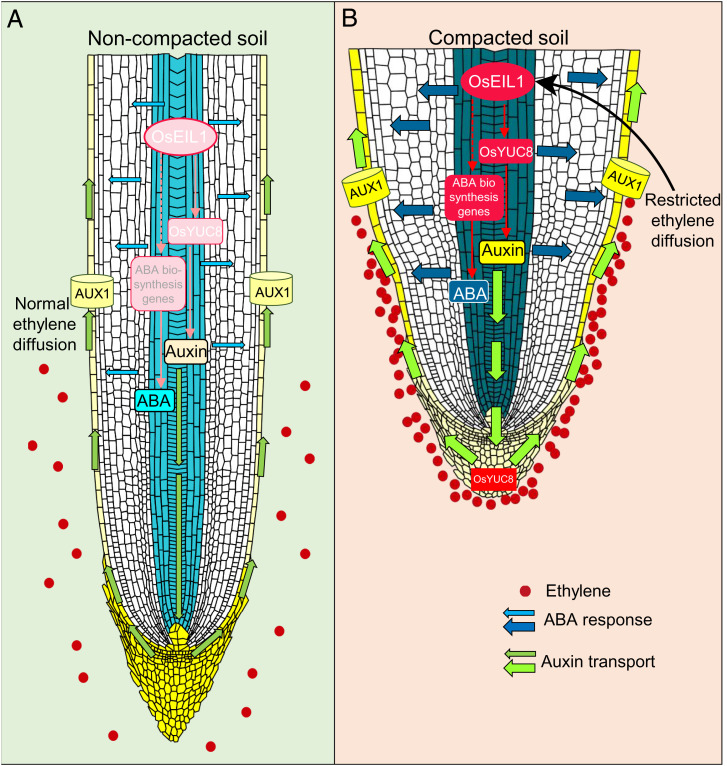Fig. 6.
Ethylene orchestrates induction of both auxin and ABA biosynthesis to regulate inhibition of elongation and promotion of radial expansion of rice roots in compacted soil. Schematic representation of root responses in (A) noncompacted soil vs. (B) compacted soil. Compacted soil conditions induce an ethylene response due to restricted outward diffusion of ethylene through smaller air-filled soil pores. Ethylene accumulation promotes OsEIL1 activation, which directly up-regulates auxin biosynthesis through OsYUC8. The enhanced auxin response in epidermal cells of meristematic and elongation zones inhibits epidermal cell elongation (and thus root elongation). In parallel, ethylene signaling promotes (indirectly) higher ABA biosynthesis in vascular tissues causing radial expansion of root cortical cells, thereby also contributing to the inhibition of root elongation in compacted soil conditions. Red dots represent gaseous ethylene molecules, red ellipse indicates enhanced ethylene response in compacted soil conditions. Intensity of color (light to darker) and width of arrow indicate higher response/level for auxin (yellow) and ABA (sky blue to royal blue). Auxin transport is denoted by green arrows.

